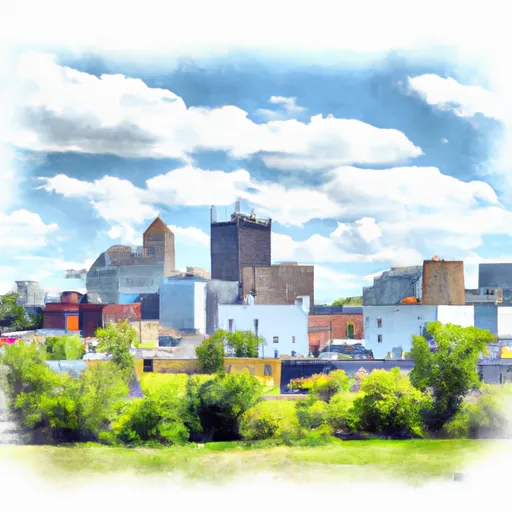-
 Snoflo Premium
Snoflo Premium
Get unlimited access to all our content
With no Ad interruptions! - Start Your Free Trial Login with existing account
Lewiston
Eden Index
Climate
6.4
•
Recreation
4.8
•
Community
2.5
•
Safeguard
4.8/10

Lewiston, Minnesota, is a charming small town located in Winona County. It experiences a typical Midwestern climate with four distinct seasons. Summers are warm and humid, with average temperatures in the 80s°F (27-32°C). Winters can be cold, with average temperatures ranging from the low 20s°F (-6°C) to the mid-30s°F (1-4°C). Spring and fall offer pleasant temperatures in the 50s°F (10-15°C), ideal for outdoor activities.
The hydrology constituents in Lewiston are shaped by the nearby Mississippi River and Whitewater River. The Mississippi River offers opportunities for boating, fishing, and bird-watching. The Whitewater River, known for its pristine waters, attracts kayakers and canoeists seeking a thrilling adventure. Additionally, there are several nearby lakes and parks, such as Lake Winona and Whitewater State Park, offering hiking trails, camping options, and picturesque landscapes.
Outdoor enthusiasts will find plenty of recreational opportunities in Lewiston. The region is renowned for its fishing, with ample catches of bass, trout, and walleye. Hunting is also popular, with opportunities for deer, turkey, and small game hunting. Hiking, biking, and wildlife watching are common activities, allowing visitors to immerse themselves in the area's natural beauty.
In summary, Lewiston, Minnesota, offers a moderate climate throughout the year, with diverse hydrology constituents centered around the Mississippi and Whitewater Rivers. The town provides a myriad of outdoor recreation opportunities, from boating and fishing to hiking and wildlife watching, making it an attractive destination for nature lovers.
What is the Eden Index?
The Snoflo Eden Index serves as a comprehensive rating system for regions, evaluating their desirability through a holistic assessment of climate health, outdoor recreation opportunities, and natural disaster risk, acknowledging the profound impact of these factors on livability and well-being.
Climate Health Indicator (CHI): 6.4
Lewiston receives approximately
886mm of rain per year,
with humidity levels near 83%
and air temperatures averaging around
7°C.
Lewiston has a plant hardyness factor of
4, meaning
plants and agriculture in this region thrive during a short period during spring and early summer. Most
plants will die off during the colder winter months.
By considering the ideal temperature range, reliable water supplies, clean air, and stable seasonal rain or snowpacks, the Climate Health Indicator (CHI) underscores the significance of a healthy climate as the foundation for quality living.
A healthy climate is paramount for ensuring a high quality of life and livability in a region, fostering both physical well-being and environmental harmony. This can be characterized by ideal temperatures, reliable access to water supplies, clean air, and consistent seasonal rain or snowpacks.
Weather Forecast
Streamflow Conditions
Upper Mississippi-Black-Root
Area Rivers
Upper Mississippi-Black-Root
Snowpack Depths
Upper Mississippi-Black-Root
Reservoir Storage Capacity
Upper Mississippi-Black-Root
Groundwater Levels
Recreational Opportunity Index (ROI): 4.8
The Recreational Opportunity Index (ROI) recognizes the value of outdoor recreational options, such as parks, hiking trails, camping sites, and fishing spots, while acknowledging that climate plays a pivotal role in ensuring the comfort and consistency of these experiences.
Access to outdoor recreational opportunities, encompassing activities such as parks, hiking, camping, and fishing, is crucial for overall well-being, and the climate plays a pivotal role in enabling and enhancing these experiences, ensuring that individuals can engage in nature-based activities comfortably and consistently.
Camping Areas
| Campground | Campsites | Reservations | Toilets | Showers | Elevation |
|---|---|---|---|---|---|
| Paddy Creek | 36 | 1,008 ft | |||
| Mark Twain State Park | None | 666 ft | |||
| Chamois Access - MDC | 4 | 530 ft | |||
| Paydown Access - MDC | 6 | 596 ft | |||
| Lakeview Park - Mexico | None | 810 ft | |||
| Montauk State Park | None | 910 ft | |||
| Ray Behrens | None | 677 ft | |||
| Piney River Military - Fort Leonard Wood | None | 768 ft | |||
| Rollins Ferry Access - MDC | 11 | 568 ft | |||
| Lane Spring | 64 | 1,069 ft |
Nearby Ski Areas
Catastrophe Safeguard Index (CSI):
The Catastrophe Safeguard Index (CSI) recognizes that natural disaster risk, encompassing floods, fires, hurricanes, and tornadoes, can drastically affect safety and the overall appeal of an area.
The level of natural disaster risk in a region significantly affects safety and the overall livability, with climate change amplifying these risks by potentially increasing the frequency and intensity of events like floods, fires, hurricanes, and tornadoes, thereby posing substantial challenges to community resilience and well-being.
Community Resilience Indicator (CRI): 2.5
The Community Resilience Indicator (CRI) recognizes that education, healthcare, and socioeconomics are crucial to the well-being of a region. The CRI acknowledges the profound impact of these elements on residents' overall quality of life. By evaluating educational resources, healthcare accessibility, and economic inclusivity, the index captures the essential aspects that contribute to a thriving community, fostering resident satisfaction, equity, and social cohesion.

